Winter in Norway transforms the landscape into a snowy wonderland, offering unique experiences like northern lights, dog sledding, and cozy nights in by a fire. But it's not always so enjoyable! Here’s what to expect in the winter season.
A common question we receive is: what is a Norwegian winter really like? It's hard to generalise, but depending on your location winter is Norway is probably not as white and cold as you think.
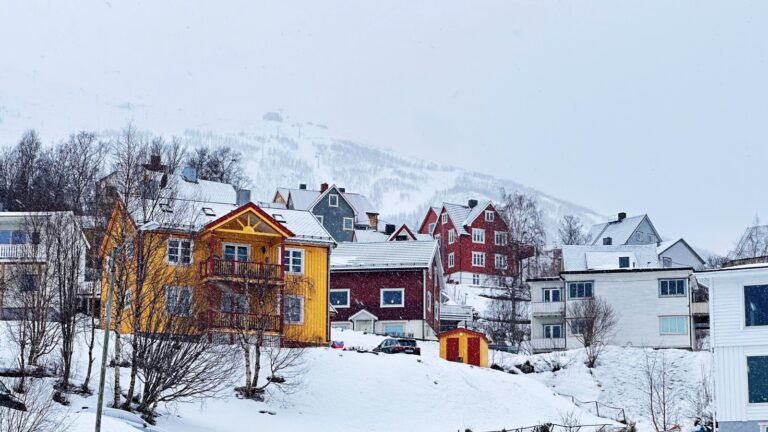
The nights are drawing in (fast), the temperatures are plummeting, and the Marius sweaters are everywhere. Yep, it's that time of the year again.
The winter in Norway is always a mixed bag for me. There are many reasons to love winter in Norway, but it's not the same for everyone.
I absolutely love the late winter months where the light in the sky and the snow on the ground makes even the ugliest parts of town beautiful!
But it's not always so enjoyable. In particular, earlier in the winter, things are much more challenging. The long hours of darkness and ice on the ground making everyday life a struggle.
Whether you're planning a trip or you're about to make the big move, here's what to expect from the winter in Norway.
Table of Contents
When is the winter in Norway?
I've written before about how I perceive there to be five seasons in Norway, with winter very much split into ‘the dark one' and ‘the white one'. This of course isn't a scientific definition!
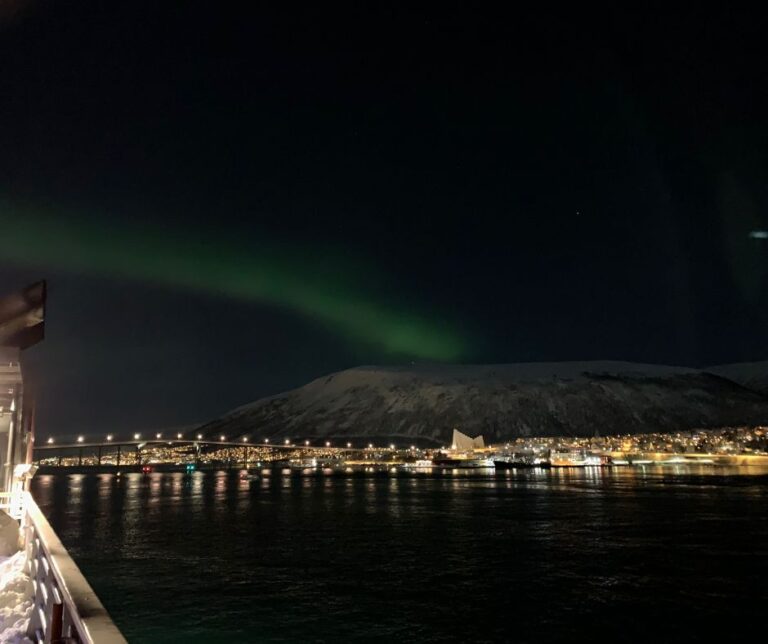
But, depending on where you live, there is a fast descent from the short autumn season into the dark, wet and windy days of the early winter, which tends to run through until Christmas.
It's the time of year with the most rainfall, but temperatures tend to remain above freezing. Snow can certainly fall, but it doesn't often stick around for too long, at least in the city centres.
Once New Year is done and dusted, the days start to get longer once again and the likelihood of snow is much greater.
I can't understate how much snow brightens things up here in Trondheim! On the flip side, this is also easily the coldest time of the year. Depending on where you live snow can fall as early as September and as late as May.
Typically, in Trondheim, we expect snow from around mid-November or early December through to Easter, but there are many, many days without snowfall, of course! Some years we haven't seen any snow at all until January.
How cold is the Norwegian winter?
Many people planning a visit contact me to ask how cold is the winter in Norway. The answer again, of course, is that it depends!
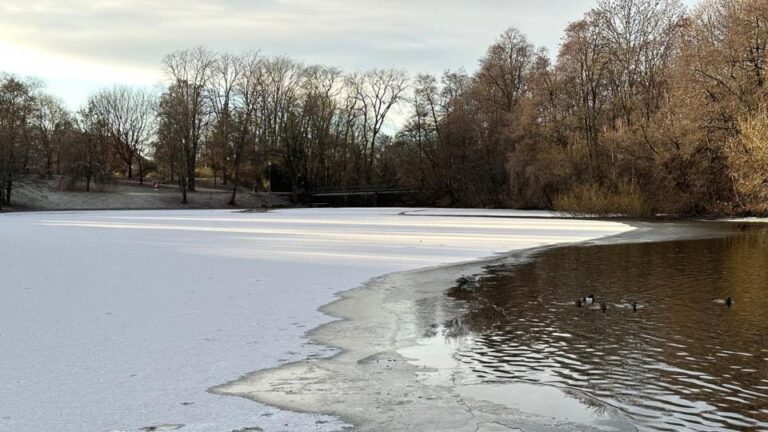
The long Norwegian coastline reaps the benefits of the ocean currents throughout the year, which have a warming effect in the winter. The average temperature in the northern Lofoten islands rarely dips below freezing, despite having the same latitude as northern Canada.
Indeed, if you're from Minnesota or parts of Canada, the Norwegian version of the season may well be surprisingly mild compared to what you're used to.
That said, for most people moving here the winter is going to much colder than you expect. In the cities a daily temperature of around freezing is common, but there are milder spells every year.
Each year in Trondheim the temperature dips below -10C a handful of times, and maybe gets as low as -20C once a year.
The coldest temperature I've personally experienced in Norway was -23C in Oslo, but it can get significantly colder than that away from the coastline in places such as Røros near Trondheim, and on the Finnmark plateau in northern Norway.
Norway in December
The run-up to the festive period is a popular time to visit Norway and I get emails from many people asking specifically about this time of year.
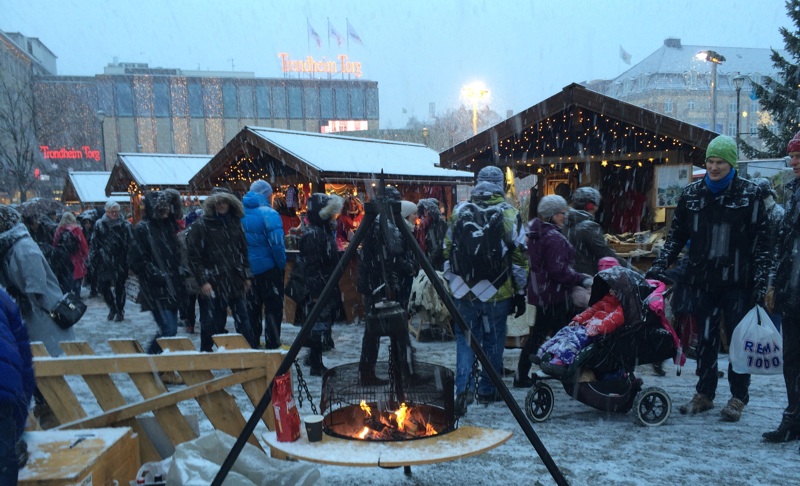
Along with January, December is the darkest time of the year but the streets are lit by candlelight, white festive lights, and Christmas markets. But not necessarily snow!
While snow is absolutely normal at this time of year, it's not a guarantee. January to March tends to be the period with the most snowfall.
Here are the sort of temperatures you can expect in various cities around the country during the month of December, based on a long-term average range of the average temperature:
- Oslo (south-east): -5C to +2C
- Kristiansand (south): -4.5 to +2.5C
- Bergen (west): -0.5C to +5C.
- Trondheim (central): -4C to +1C
- Tromsø (north): -5C to +0.5C
Remember this is statistics, so the actual temperature on any one day can be considerably colder! If these temperatures don't seem very low to you, that's because the coldest temperatures tend to be experienced throughout the country between mid-January and March.
What to Expect from Winter in Oslo
The Norwegian capital is a popular choice to visit during the winter. Unlike many other places in Norway, Oslo in the winter remains well and truly “open for business” from a tourism perspective.
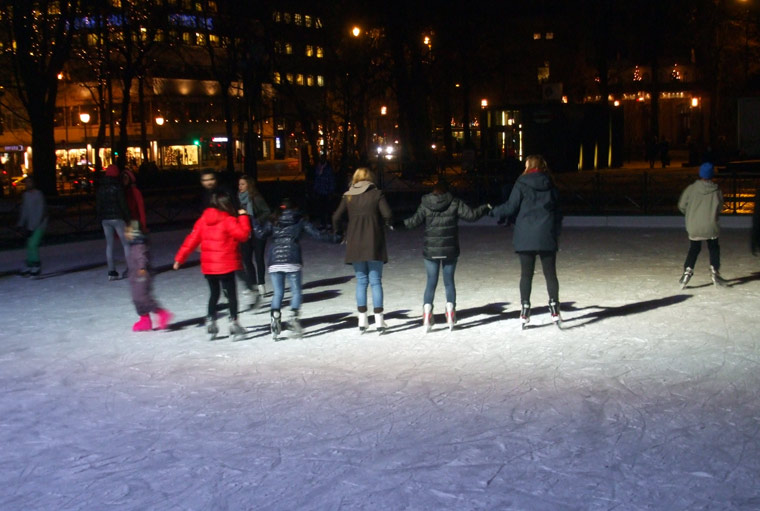
Most attractions keep their regular opening hours (many have a schedule for the entire off-season) while some offer extra interest with a Christmas theme.
One popular spot is the Christmas market at Spikersuppa, the open area between Karl Johans gate, the Norwegian Parliament building, and the National Theatre.
The Christmas market has grown in size in recent years and is a popular hangout even when it first opens in mid-November. Also popular is the ice-rink, for which skates can be rented on site if you don't have your own.
Farther afield, Bærums Verk runs a Christmas market including craft stalls and reindeer sled rides for the kids, while several other festive markets spring up around the capital's streets.
Skiing in Oslo is also possible, and not just on the many kilometres of cross-country trails in the Nordmarka forest. Oslo Winter Park, now known as Skimore Oslo, at Tryvann is a popular downhill ski resort with equipment rental possibilities.
What to Expect from Winter in Bergen
Bergen, Norway’s second-largest city, offers a unique winter experience characterised by its mild coastal climate and natural beauty. Though winters can be wet, with frequent rain and occasional snow, the city's charm shines through.
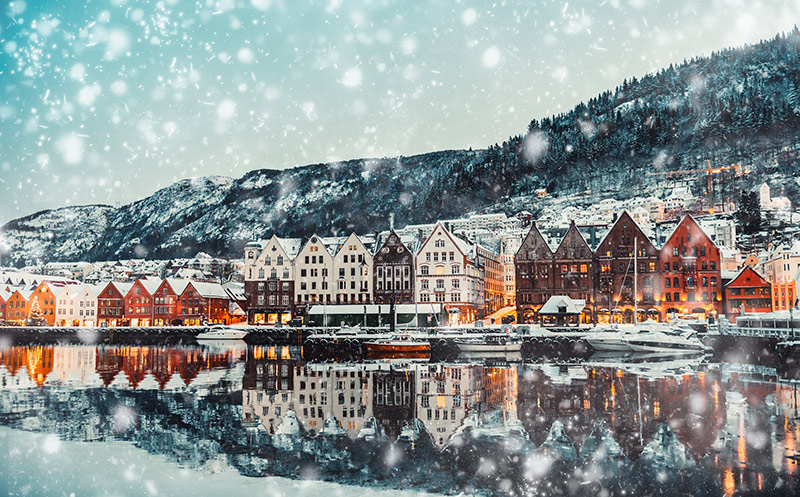
The picturesque streets, colourful wooden houses, and surrounding mountains make Bergen in the winter a fun tourist destination, even if you'll likely need a raincoat.
Key activities include exploring Bryggen Wharf, a UNESCO World Heritage site, visiting the Fløyen mountain for panoramic views, and enjoying the local seafood. Despite the short daylight hours, Bergen's cultural offerings make it a must-visit in winter.
The Norwegian Fjords in the Winter
Winter in Norway’s fjords offers a tranquil, breathtaking experience, distinct from the bustling summer season. However, it’s essential to recognise that winter in the Norwegian fjords is the low season, necessitating more meticulous planning.
Some attractions and accommodations may be closed, dining options are limited, and scenic mountain roads often shut down due to weather conditions. Poor visibility and sudden weather changes could force last-minute alterations to your itinerary.
Despite these challenges, the beauty of snow-covered fjords, combined with winter activities like hiking and skiing, makes the experience likely to be an unforgettable one.
My suggestion? Stay in Bergen and take the railway to Flåm. You'll enjoy the world-famous Flåm Railway in the winter, taking in snow-dusted scenery that few others enjoy.
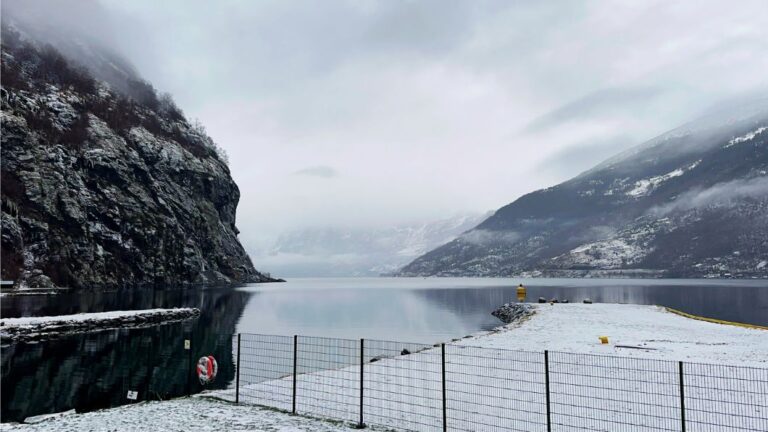
Once down in Flåm itself, you can make the most of this gorgeous fjord village with very few other tourists, returning to Bergen on the train. This way, you experience a taster of the fjords in the winter with no need to risk the drive. Speaking of which…
Winter Driving Conditions in Norway
So far, I've focused on what things are like in the cities. That's because the vast majority of people live in cities, and they are more popular as city breaks in the winter.
However, if you live in Norway or you're planning a longer trip when snow is on the ground, you'll need to know all about what to expect and how to prepare for winter driving in Norway.
Norwegian driving rules state that the driver must assess whether their vehicle has sufficient grip on the road surface. On slippery surfaces, sufficient traction can be ensured by using studded or non-studded winter tyres, snow chains or similar devices.
Summer tyres should not be used in winter conditions, when the tread depth must be a minimum of 3mm (compared to 1.6mm normally). If renting a vehicle during the winter months it should be supplied fully ready to cope with the conditions, but check in advance if you are unsure.
One thing to watch out for when driving during this time of year is road closures. I get emails from people who really want to see the fjords or another rural region during the winter.
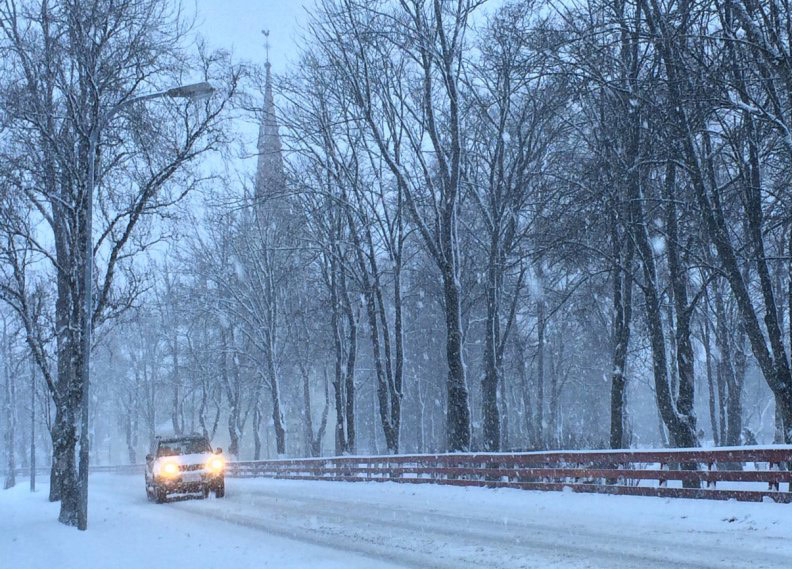
While I understand that (they are a truly spectacular sight when covered in snow), there is a reason you don't see too many white-dusted photos of the fjords: It's hard to get there with many mountain passes closed, and accommodation options are few and far between.
Road closures include many of Norway's popular National Scenic Routes, including Trollstigen, Gamle Strynefjellsvegen and the Sognefjellet mountain road.
Even when roads are open, conditions can be precarious, especially if you're not used to driving in snow and on icy roads. Take care, and perhaps consider a different time of year for your epic road trip.
Skiing in Norway
Of course, December to March is prime ski season! A growing number of people choose to ski in Norway for uncrowded trails, breathtaking landscapes, pristine powder, and the chance to experience the birthplace of modern skiing.
The exact dates for the season vary depending on location, and sometimes some of the biggest ski resorts can stay open well into April. It all depends on the snowfall.
Norway isn't generally thought of as a downhill destination, but its biggest resorts such as Hafjell, Trysil and Oppdal can be surprisingly quiet simply because of the locals' love of cross-country skiing!
Of course, things do get more crowded at weekends, and during late evening opening sessions.
If you want to learn cross-country skiing there is no better place than Norway. All resorts offer equipment hire and professional instruction. But most importantly, virtually any Norwegian you meet on the trails will be an expert and only too happy to help a bemused foreigner in need!
Norwegians out on the trails transform from shy introverts to the most friendly outgoing people you'll ever meet. Give it a try! And just see what happens if you start talking about your cross-country skiing trip when you get to your office on Monday.
Winter Cruises in Norway
When you think of cruising, you might imagine sun-soaked decks and tropical breezes, but winter cruises in Norway offer a starkly different, yet equally enjoyable experience.
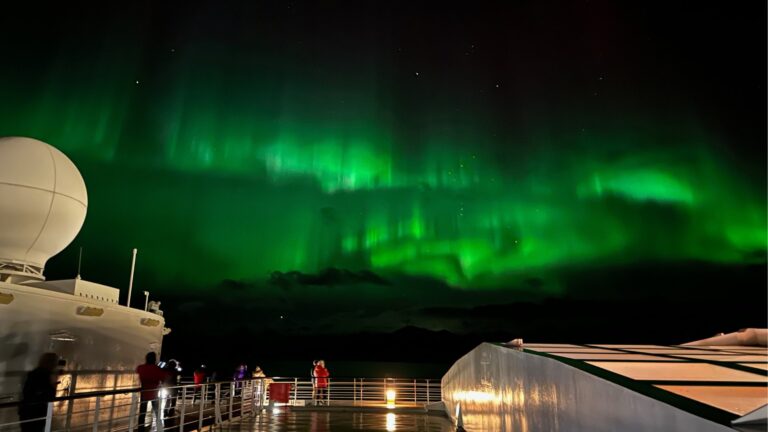
Cruising in Norway's off-season blends breathtaking landscapes with thrilling activities like snowmobile tours and northern lights viewings.
Unlike other cruises, a winter voyage through Norway requires a flexible attitude, as weather conditions can be harsh, with temperatures sometimes dropping below -25°C (-13°F) in places like Alta and Kirkenes.
British-focused lines like P&O Cruises, Saga, and Fred Olsen offer northern lights itineraries, while the Norwegian coastal route provides a more immersive winter experience.
Travellers should prepare for the possibility of itinerary changes due to winter storms, which can cause missed ports or delayed arrivals. To minimize seasickness, choose a cabin midship on a lower deck, avoiding premium suites at the ship's front or back.
Even if the northern lights remain elusive, limited daylight offers ample opportunities to engage in winter activities like dog sledding and snowshoeing. Shore excursions often sell out early, so advance booking is recommended.
Despite the challenges, the unique combination of Arctic landscapes, wildlife, and remote communities makes a winter cruise in Norway a memorable adventure.
So, that's my whirlwind tour of what to expect from Norway in the winter. If you're planning a trip, enjoy yourselves and take care! If you've enjoyed this article and are thinking about a visit, why not share your plans on Pinterest? We've got just the pin for that. Just hit that social sharing button.

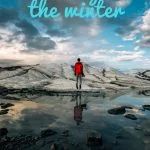

Dear David, thank you for your interesting stories. I had a lovely 2 weeks in Norway in1989, as part of a longer trip. We plan to be back there in 23 or 24. I am interested in contacting some of the bloggers especially if they have accommodation. Of course in 89, there were no mobiles, computers etc but it was still easy to travel and see things on eurail & boats & day trips. I would like to contact jasmin Martin in landasbygda because I was fascinated by her story. Best wishes Tracey Blomfield
Thank you David. Thank you so much. Where can you get appropriate winter clothes especially socks. Should you buy them in the States or wait to get them in Norway? Suzi Waag Smith
If you already know what you need, I don’t see why you wouldn’t buy them before your trip. If you want to wait to see what the conditions are like, then it depends where you’re travelling to in terms of what would be available there.